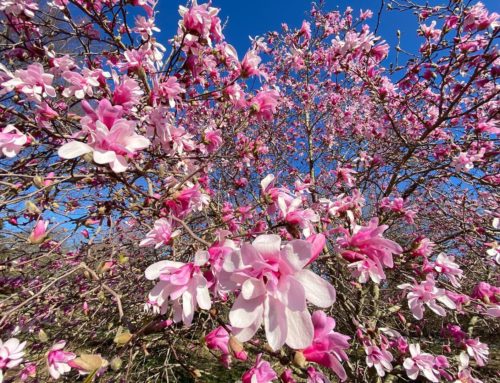As the winter and late spring weather warms, spring ephemerals are busy underground getting ready to emerge. The mechanisms they employ to emerge, photosynthesize, flower, pollinate and reseed in the short spring season are fascinating.
Many spring ephemerals like the trout lily (Erythronium americanum), bloodroot (Sanguinaria canadensis) and spring beauty (Claytonia virginica) are geophytes and they are growing happily at Tyler and in many wooded areas. Geophytes produce their stems, buds and leaves in compact form in winter, underground before emergence in spring. When conditions are right they rapidly pump these compressed structures in their corms, rhizomes and bulbs full of water to quickly start their above ground lives.

For these plants timing is everything. They must balance soil temperature for rhizome and shoot growth and air temperature for vegetative above ground growth against available sunlight for photosynthesis and insect pollination. All before the upper forest canopy develops. Air temperature is critical for flowering since pollinators are only active above certain temperatures. Bumblebees can go about their business when the air reaches 41 degrees F but native bees have to wait for 55 degree days. So plant/pollinator evolutionary relationships have set the bloom time for these plants.
Pollination is a symbiotic relationship between plant and insect. Plants obviously benefit from pollination while the insects find nectar for energy and/or pollen to store as food for their larval young. Native bees will mix pollen, nectar and saliva forming fermenting balls of “bee bread “on which they lay an egg. The larva consumes this nutritious ball to develop, pupate and emerge as a new adult to start the process again.
Timing is also critical to pollination. Cross-pollination is the most desired outcome of the flower/insect relationship since it gives the greatest diversity of genes and therefore results in more adaptation opportunities. Ephemerals and other plants have evolved methods to increase the likelihood of cross-pollination. One tactic is for individual flowers to stagger the maturation of their sexual parts so that pollen is ready before the stigma is receptive.
In a different approach the bloodroot flower stamens (male parts where pollen is produced) will open bending away from the stigma (female parts where the ovary is located) to prevent accidental self-pollination. In this geometry it is more likely that the pollinator insect will transfer pollen from a different flower to the stigma. But if the flower remains un-pollinated due to bad weather or bad luck, after 3 days the stamens bend toward the stigma and self-pollinate. You can see this in the bloodroot image.
Spring ephemerals have also evolved a novel method of seed dispersal. A fleshy structure surrounds their seeds called an elaiosome. Ants will be attracted to these oily and energy rich structures and carry the seed back to their nest where the elaiosome is consumed. The seed is then dumped on the colony trash heap which is rich in plant nutrients assuring germination and establishing a colony of that plant.
This method of seed dispersal is efficient locally but is pretty slow in terms of long range spread. If ants were the only seed dispersers plant populations would have spread less than 10 miles since the end of the last ice age, 12,000 years ago. This is known as Reid’s Paradox after paleontologist Clement Reid, who wondered how oaks had recolonized his native England after the glaciers melted. Ecologists have yet to identify an animal, or phenomenon that can provide the occasional “big leap” needed to explain the movements of these plants back to he northern states. Perhaps early Native American “gardeners” carried the beauty of spring over these distances.
Don’t miss your chance to see some of these and other spring ephemerals. Their season is brief but they do it all in a short time but a big way.






